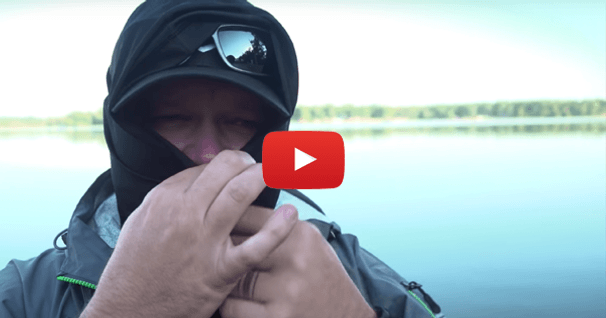Laser Light Signals
Several columns ago ("Sea Kayaking's True Colors"), I talked about signaling devices explaining that a "signal" is anything that gets your attention. It can do so by being in major contrast to its surrounding area and background (a bright patch of cloth against dark foliage) or it can capture your attention (flashing lights, dense smoke or bright lights/flames). It can also stand out because it’s out of context with its surroundings (a row of neatly aligned kayaks on a beach of scattered, random logs). An innovative mind can create numerous scenarios where the signal draws the requisite attention.
Let’s talk signals at night. The high tech flashlights on the market today are mostly bombproof, and come with several different lamp colors (clear/red/green/amber/flashing/etc.). All are quite small so as to fit handily in a PFD pocket or at the end of a lanyard around the neck. A "hand’s free" light source is a headlamp - preferred by many kayakers who like to light their way as they paddle through the dark passages of night.
As bright as they appear to be at close range, their effectiveness dwindles as the distance grows. It’s hard to tell how far away a light is at night. A high wattage light far away can look as close or closer than a smaller wattage light that is actually much closer. Anyone who’s routed passage at night using lighted buoys knows how vital it is to have aids such as number of flashes, pauses and other defining components to differentiate one light’s location and distance from another. Basically a flashlight’s beam doesn’t carry that far in the dark to be an effective signaling tool over longer distances.
A light that does seem to work well at night is a laser light. It projects a concentrated beam of light farther than does the regular dispersing light of a flashlight and at a higher intensity or brilliancy. I bring this up because I have been field-testing a laser light that I think is an effective and handy rescue aid for paddlers.
The smallest of these units (there are three available from this manufacturer) is 3.5 inches long - about the size of fat, half smoked cigar. It is housed in a waterproof cylinder made of anodized aircraft aluminum – and therefore waterproof down to 80 feet. The switch is a twist on-twist off type opposite the working end of the laser. It is powered by a standard 3-volt lithium battery. Those are the basic mechanical specs – what it can do is what counts.
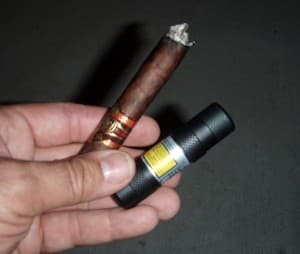
Like any light-sourced emergency signaling device, its purpose is to cast a beam of light at a searcher or to create a signal that can be picked by a random target. At a minimum such a signal directs rescuers to your location or hopefully excites the curious into action. In the case of an emergency signaling mirror, it reflects a beam of sunlight off the surface of the mirror and onto the target. The laser signal projects an infinite series of dots that when viewed from the projector’s perspective appear as a red line (remember the definition of a "line" from geometry class?). That line can be rotated, or cast horizontally up and down a slope or knoll or vertically sideways along a beach or distant meadow with the idea that anyone along that line will see the laser as a point of light. When the observer looks directly into the laser source it will appear to blossom or explode to a much greater diameter. It’s like looking at a red dwarf star that suddenly goes super nova!
Under ideal conditions, according to the information with the laser, this line can be projected out 20 –30 miles. Of course, the farther away from the source, the wider the beam, hence more area covered. When I projected the beam across my yard it appeared to be about 18" long at about 15 yards distance. When it’s projected on a water tank across the street at a distance of about 100 yards, it appeared to be about 15-18 feet in length. The further the distance - the larger angle of spread of those dots. The manufacturer claims that the line signal projected is 6,000 feet across at 20 miles! Anywhere along that mile-long line of dots, the signal will appear as a red point of light.
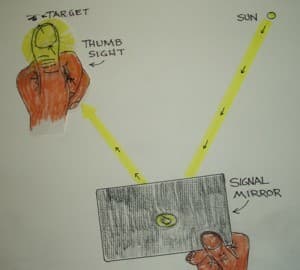
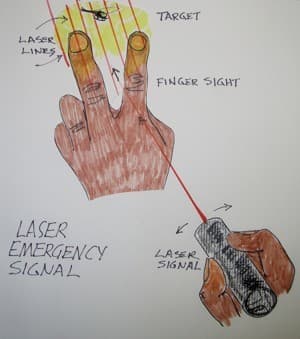
The laser can be used during the day, too. The same "extended sighting" arm technique used to "sight in" a signal mirror is used to direct the laser beam at its intended target. Here’s how that works: extend one arm out full length and make the "peace" sign with the middle and index finger. This is the sight – hold the "V" out and try to keep the target between your two fingers. The idea is that if your "V" is aimed at the target, and you are casting the sun’s reflection or the laser beam at the "V", the target is also in line and will see that signal. To sight with the laser, hold it up close to your eye, sight down along the length of the tube and direct the beam back and forth between each finger. The laser is now aimed at the target between the fingers, too. Instead of trying to keep the beam steady and constantly affixed on the target, a slight circular or sweeping motion that keeps the beam within the area of the V will assure that the target sees the signal repeatedly.
Another application of the laser is in seeking out reflective signs or other reflective sources at great distances. The laser causes such signs to reflect back a section of the line – oftentimes even before you can see even the faintest image of the target in the darkness. Imagine being able to sweep through the night and pick up the reflection of tape on a paddle when it’s so far away a flashlight’s beam would be diffused and swallowed by the night. The same application could be used to find channel or shore buoys or even trail markers in the heart of the forest.
The laser doesn’t get hot. It’s not harmful unless you shine the beam through someone’s eye into his or her retina (this danger decreases at distances over 10’ but still not a good idea!). The laser is limited in its multi-tasking ability. I like gear that can be used for a variety of applications (a raincoat also can be used to carry water, be waved as a signaling flag, even an emergency sail). A laser light pretty much just sends out its light signal. That’s OK; some things do have just one job to do well. It does require batteries that can die or become too weak to signal.
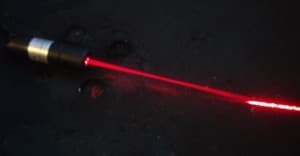
Greatland Laser (www.greatlandlaser.com) makes the unit referenced herein. It comes in the small Rescue Laser Light/40 hour. They also produce two up-grades: a 72-hour light ($110) and a day/night mega-light (green) for $250.
Remember, any survival equipment, or rescue tool is worthless unless you have it on you! Consider multiple uses when possible and make sure you carry spare batteries for those indispensable pieces of gear whose Achilles’ heel is a tiny power source smaller than your little finger!
Tom Watson is an avid sea kayaker and freelance writer with 15 years experience in the North Pacific waters of Kodiak Island, Alaska. He is also a freelance writer whose articles have appeared in most of the popular kayaking publications. He posts articles, thoughts and paddling tips on his website: tomoutdoors.com/blog/ He has also written 2 books, "Kids Gone Paddlin" and "How to Think Like A Survivor" that are available on Amazon.
Related Articles
This a follow up to a video I did where I talked about differences that you may find in dry and semi-dry…
Can you use a Greenland Paddle in a Recreational Kayak? I received this question recently from a…
Learn how to stay comfortable on the water when fishing in the cold. When you stay warm and…
I just couldn't resist having just one more trip before the season ended and the lakes froze. So, on the…


